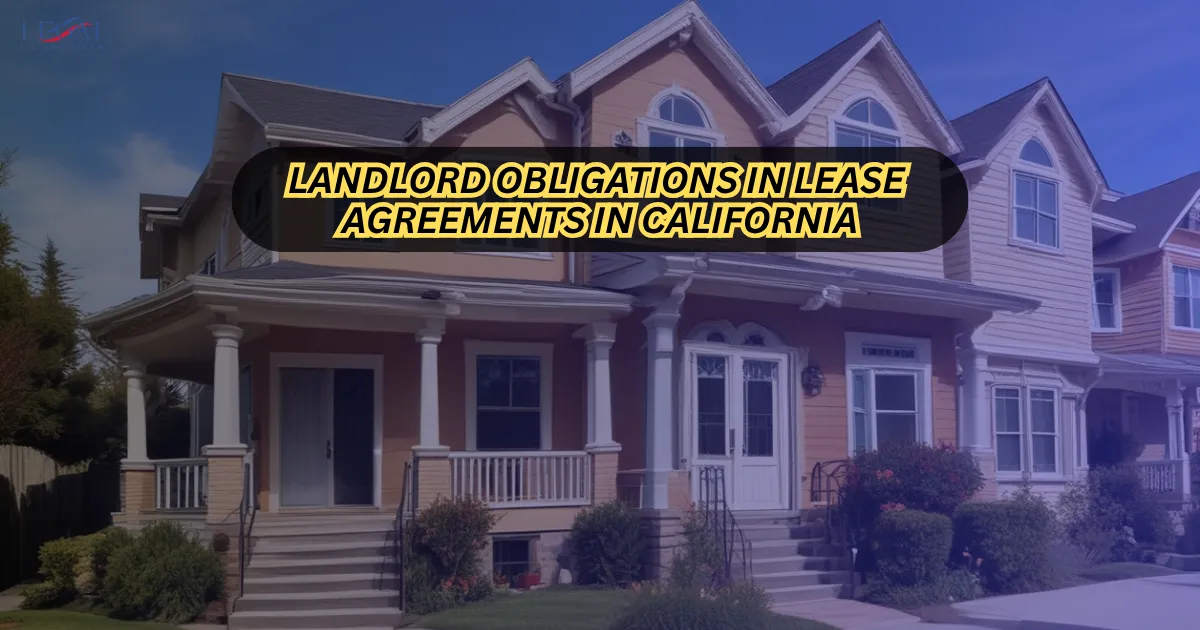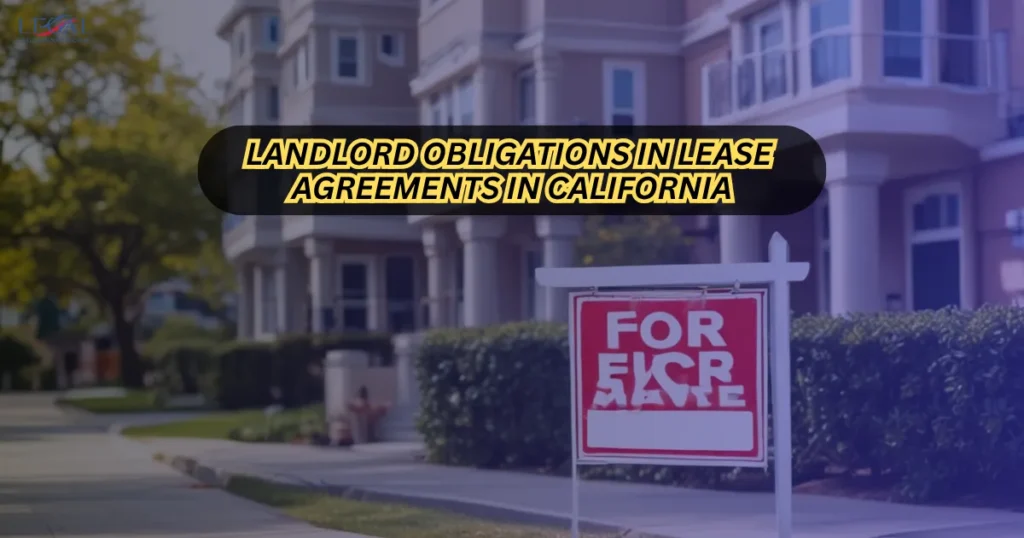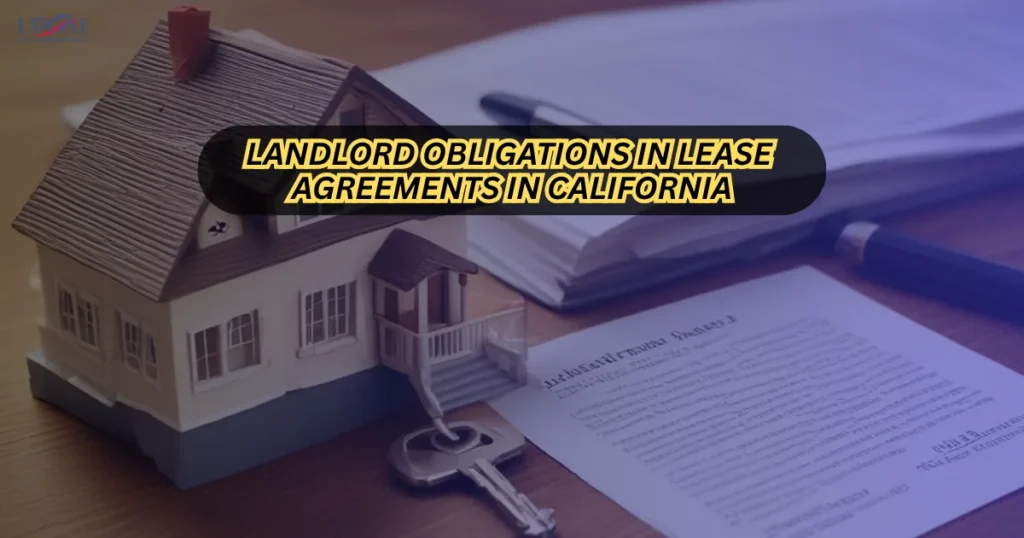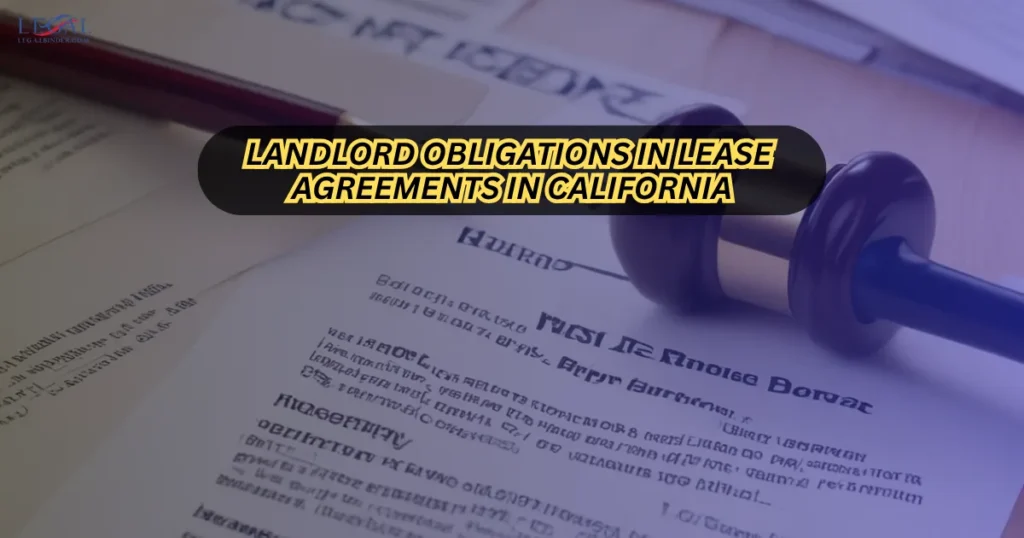Physical Address
304 North Cardinal St.
Dorchester Center, MA 02124
Physical Address
304 North Cardinal St.
Dorchester Center, MA 02124

Landlord obligations in lease agreements in California are more than contractual checklists—they represent a legal and ethical commitment to those who call your property home. Whether you’ve just purchased your first rental unit or you’re managing a portfolio of apartments, knowing your duties ensures compliance, protects your investment, and builds trust with tenants.

Imagine a tenant moving in with high hopes—only to face persistent plumbing issues, unsafe wiring, or unexpected policy changes. The loss of trust from unmet obligations can spiral into disputes, legal battles, and reputational damage. In California’s tenant-protective legal environment, understanding what’s required of you prevents costly mistakes and creates a better living experience for all.
This guide will walk you through each key landlord obligation under California law, explaining how to weave them into your lease agreements and rental practices so that your property management is both compliant and tenant-friendly.
For more compliance guides and landlord resources, visit our homepage.
California’s landlord-tenant relationship is governed by state laws, local ordinances, and specific contract terms. Your obligations often include both legal mandates and practical management responsibilities:
Authoritative resources for landlord laws in California:
The property must meet basic health and safety standards: safe plumbing, heating, electrical systems, a roof free of leaks, and no infestations. This is a non-negotiable legal duty.
Repairs must be made promptly after a tenant’s request. Essential services such as hot water and heating are prioritized under California law.
Security deposits cannot exceed two months’ rent for unfurnished units (three months for furnished). You have 21 days after move-out to return the deposit with an itemized deduction statement.
Provide at least 24 hours’ notice for entry, except during emergencies.

Required disclosures may include:
California’s “just cause” eviction rule applies in many tenancies—termination must be for a legally defined reason, with proper notice served.
A written lease is mandatory for most fixed-term rentals over 12 months. Include all legally required terms and clauses.
Shared hallways, lobbies, and outdoor spaces must remain safe and in good repair.
Many California cities add extra landlord obligations—like rent registries or relocation assistance—that must be followed.
Avoid vague promises—list your obligations in plain English to prevent misunderstandings.
Include references to local rent control laws and building codes within your lease.
Maintain documentation of repairs, notices, and communications for at least four years.

Review state and local law updates every year and adjust your lease terms accordingly.
The more open and respectful your communication, the fewer legal disputes you’ll face.
Property managers and real estate attorneys can help keep your rental operation compliant and hassle-free.
What if I don’t make repairs on time?Your tenant may be able to withhold rent, repair and deduct costs, or seek legal remedies.Can I raise rent whenever I want?No—California laws limit rent increases and require written notice.Do I have to accept all repair requests?Only those affecting habitability are legally required, though you should address all reasonable requests promptly.Am I responsible for pest control?Yes, infestations that compromise habitability are your responsibility.
Landlord obligations in lease agreements in California aren’t just legal requirements—they’re the pillars of a sustainable, ethical rental business. Meeting them builds tenant trust, minimizes disputes, and keeps you safe from costly lawsuits.
Use your lease agreements as a clear roadmap for these duties, and refresh them regularly to reflect changes in law and best practices. Your reputation and profit depend on it.
For more California-specific property management guidance, visit our home page.